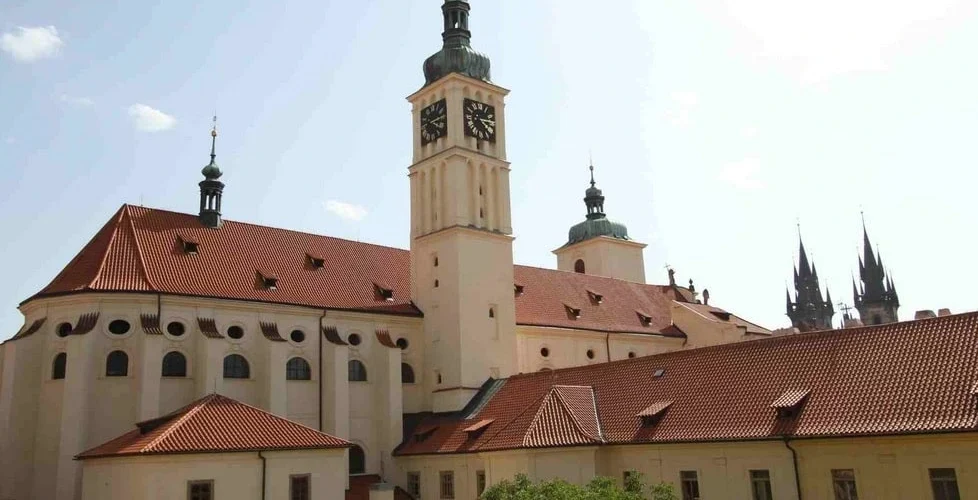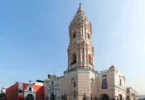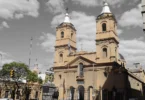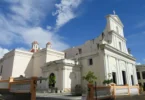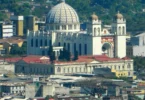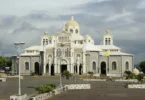Introduction
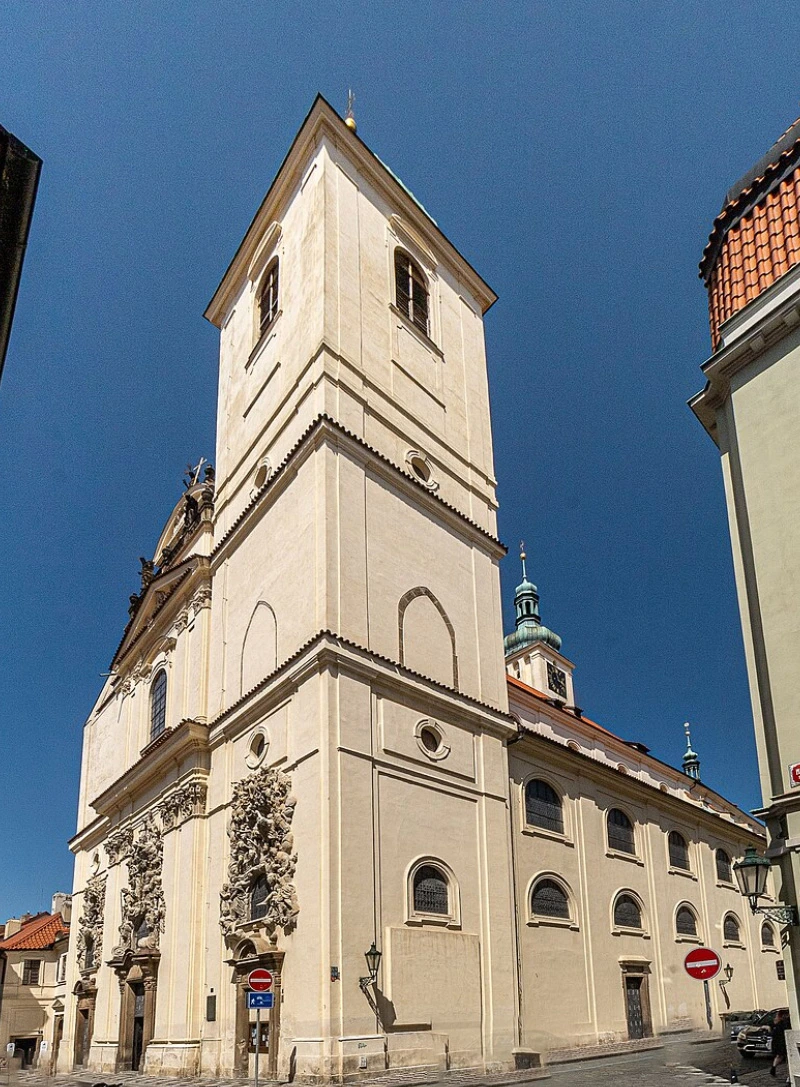
The Basilica of St. James the Greater (in Czech, it’s Bazilika svatého Jakuba Většího) is this big, beautiful church tucked away in Prague’s Old Town. You’ll find it on Malá Štupartská Street right between Old Town Square and Republic Square, so it’s pretty easy to stumble across if you’re wandering around that area. It originally had a Gothic design, but later on, it was rebuilt in the Baroque style, which is what you’ll see today. The place is massive one of the largest churches in the city, actually and it’s not just for religious services. They hold organ concerts there pretty regularly, and the acoustics are amazing. Inside, there’s the Madonna Pietatis statue and the tomb of Count Vratislav of Mitrovice, which is pretty ornate. Oh, and it’s one of the five minor basilicas in Prague, right next to a Minorite monastery, so it’s still an active religious spot with a lot of history packed into it.
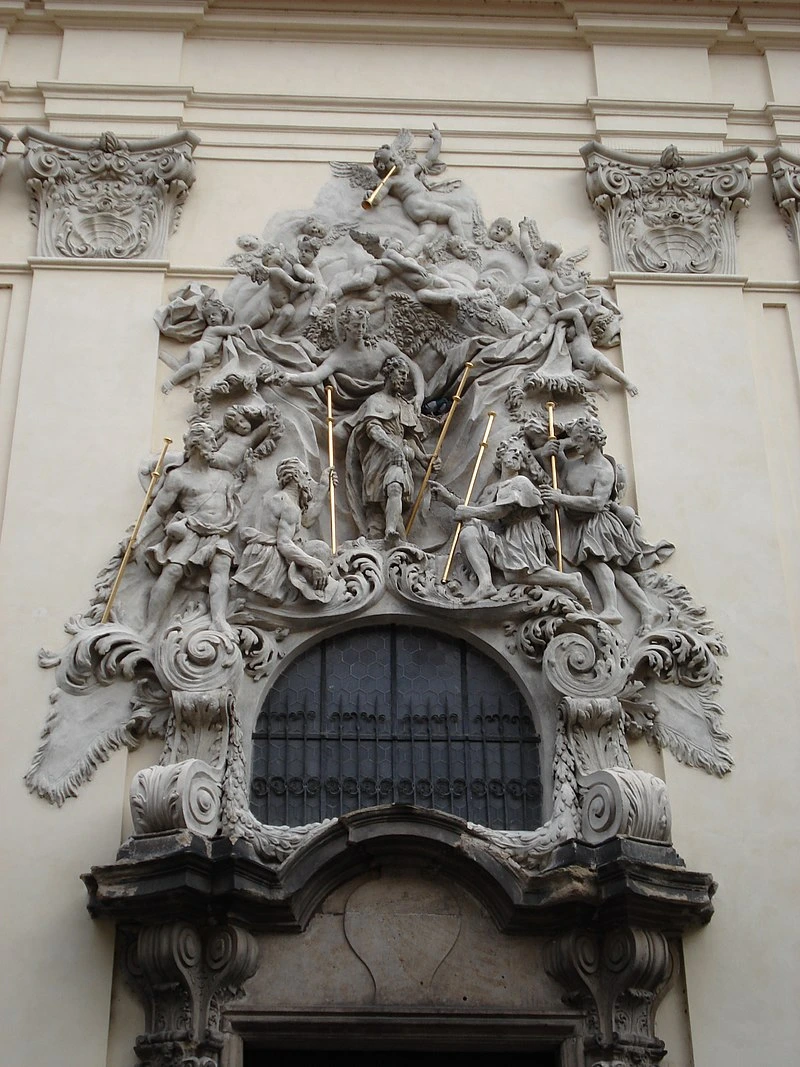
The oldest building
Based on numerous pieces of evidence, it can be assumed with a high degree of certainty that there was a building on the site of the present monastery as early as the end of the 12th century. The most common theories involve a small church in a small courtyard. The foundation of this small church was probably related to the acquisition of the relics of St. James by Přemysl Otakar I. The exact location of this building is unknown, as is its appearance.
Background of the monastery’s establishment
During the reign of the Czech King Wenceslas I, a new wave of piety swept through Prague, sweeping across Christian Europe. The ongoing Crusades not only brought new discoveries, but also contributed to the popularization and knowledge of the life of Jesus. At the same time, a new medieval social class was being formed – the bourgeoisie. Some newly established church orders, the so-called mendicants (mendicant orders), took refuge in the cities. Their monasteries were no longer enclaves in an uninhabited environment. They could fully rely on donations from the nobility and wealthy townspeople. Mendicant orders first entered the Czech environment thanks to St. Agnes, who founded the Poor Clares monastery in Francis. Modern European culture also penetrated Prague with the Poor Clares – including Gothic architecture.
Premyslid origins
Following in the footsteps of St.Agnes, her brother, the Czech king Wenceslas I, called another mendicant order to Prague – the Minorites. Wenceslas’s affection for the Minorites is evidenced by the location and dimensions of the planned construction of their monastery. The monastery was located at an important crossroads. It was close to the main Prague market (the current Old Town Square), the foreign merchants’ yard (ungelt) was a few steps to the east, and the butchers’ guild settled and built meat shops here (which were demolished in the 19th century and are now part of Masná Street). The importance of the location is also evidenced by the fact that John of Luxembourg also established his seat in Štupartská Street. The older Pemyslid church of St. John laid the foundation stone in 1232. James had to be torn down. The dedication of the new monastery church was preserved. The monastery was completed in 1244. It was located north of the current building. From this period, valuable early Gothic ribbed vaults in the cellars of the building of the Secondary Industrial School of Communication Technology have been preserved to this day. The monastery is mentioned in the Zbraslav Chronicle, which states that on February 7, 1311, a banquet was held in the monastery’s refectory in honor of the coronation of the Bohemian King John of Luxembourg.
Luxembourgers
A devastating fire destroyed the monastery in 1316. John of Luxembourg and his wife, Elisabeth of Přemyslid , took care of the restoration. Thanks to the background of their arrival, connected with the royal calling, the Minorites in Bohemia enjoyed great popularity among the aristocracy from the beginning. In the medieval environment, when life after death played a crucial role, the nobility built tombs, sometimes even residences in monasteries, and generously sponsored them. Therefore, the plans for the new Luxembourg monastery were much more grandiose than is expected for the Minorites. A large, elongated three-nave basilica layout was designed with a convent adjacent to the north side. The three towers, which are not typical for the Minorites, are a merit of the consecration – the monastery became a pilgrimage stop on the Way of St. James to Santiago de Compostela. The towers were intended to facilitate orientation for pilgrims. In 1323, the chapel of St. Anne, in 1330 the northern and southern parts of the cloister. The western and eastern parts of the cloister were built at the latest, as well as the majestic church, which was tilted from its own axis during construction for unknown reasons. In 1374, Jan Oek of Vlaim performed the ceremony of dedication. It became one of Prague’s largest and tallest churches after completion, alongside St. Vitus Cathedral and the Church of Our Lady of the Snows, which was under construction. In 1378, the death of the Holy Roman Emperor and Czech King Charles IV occurred, and the church was one of several where his body was displayed before burial.
The Baroque Era
During the Hussite Wars, the church remained largely undamaged due to the proximity of the butchers’ guild, which defended the monastery. However, it fell into disrepair and had to be restored. These works were entrusted to the court architect Ulric Aostalli. Under Rudolf II. the church was newly decorated, 15 altars were added and the walls of the main nave were decorated with coats of arms (analogy in the choir of St. Vitus Cathedral). In 1603, the bandmaster of Rudolf’s imperial band, Philippe de Monte, was buried here . However, the Passauer invasion in 1611 presented yet another threat to the monastery soon after. The butchers also saved the monastery this time. After the Battle of White Mountain, the monastic theological studies were introduced in the monastery in 1622, and later the college of St. Bonaventure was established there for about 12 students of Charles University. The Church of St. James served as a place for graduation ceremonies. In 1689, Europe was struggling with a political crisis. The rivalry between the monarchs in the struggle for the Spanish throne was responsible for numerous arson attacks in many European cities. One of the fires, started by the pro-French party, engulfed the monastery. The vault collapsed, the refectory and the southern and eastern parts of the cloister burned down. The renovation was offered to the leading fortification architect Jan Šimon Pánek, who completed the renovation within 12 years. Pánek respected and preserved the original layout of the church. However, he shortened the choir, thus equalizing its deviation, which was unimaginable for Baroque symmetry. The ceiling was lowered and vaulted with a barrel vault with lunettes. Tribunes were placed above the side aisles . A number of important Baroque masters signed the decoration of the church, making it a treasury of Baroque art.
Modern times
In 1784, the monastery was abolished as part of the Josephine reforms, but the monks continued to live there. In 1841, the northern part burned down and was sold to the first industrial high school in Bohemia, which rebuilt the building in a classicist style. In the refectory, the first kindergarten in Czechoslovakia was opened in 1869. The activities of the Minorites were renewed in the 20th century. An extensive reconstruction took place in 1941. In 1974, the church was awarded the honorary title of basilica minor by Pope Paul VI. This was also due to the rich cultural use of the church, which is endowed with a large four-manual organ from 1705.
Architecture of Basilica of St. James the Greater, Prague, Czechia
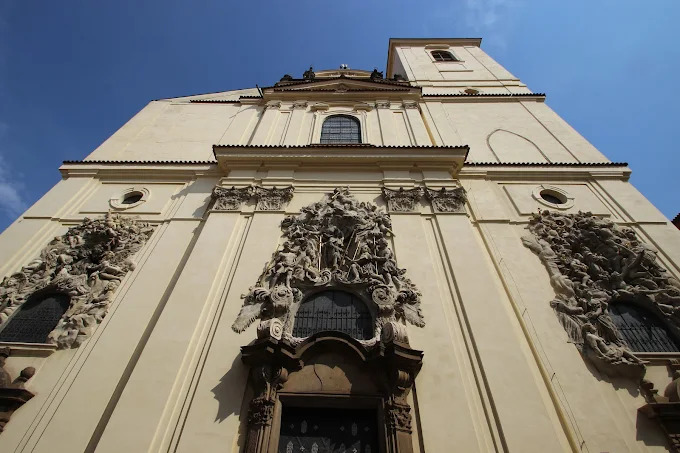
Architectural style: Baroque architecture
The Layout and Vibe
The present-day appearance of the church has been preserved without significant changes from the reconstruction in the 17th century. The only remaining Gothic element is the eastern clock tower. The overall layout refers to the Jesuit churches Il Gesù in Rome and St. Ignatius in Nové Msto is the only exception, with the exception of the extended choir, which was cut down by several meters from the original structure. On the north side, the church is adjoined by the convent of the monastery and the Gothic sacristy with four bays of a cross vault.
The Front of the Church
The facade of the church is in the style of classicizing Baroque with one tower on the south side. The north tower was not restored after the fire of 1689. The attic of the facade is decorated with statues of St. Joachim, St. Anne, the Virgin Mary and St. John, and on the gable there is a statue of Salvator . The austere facade is dominated by huge stuccoes of St. Francis, St. James and St. Anthony of Padua by Ottavio Most from 1695–1701, which give the church a Spanish touch.
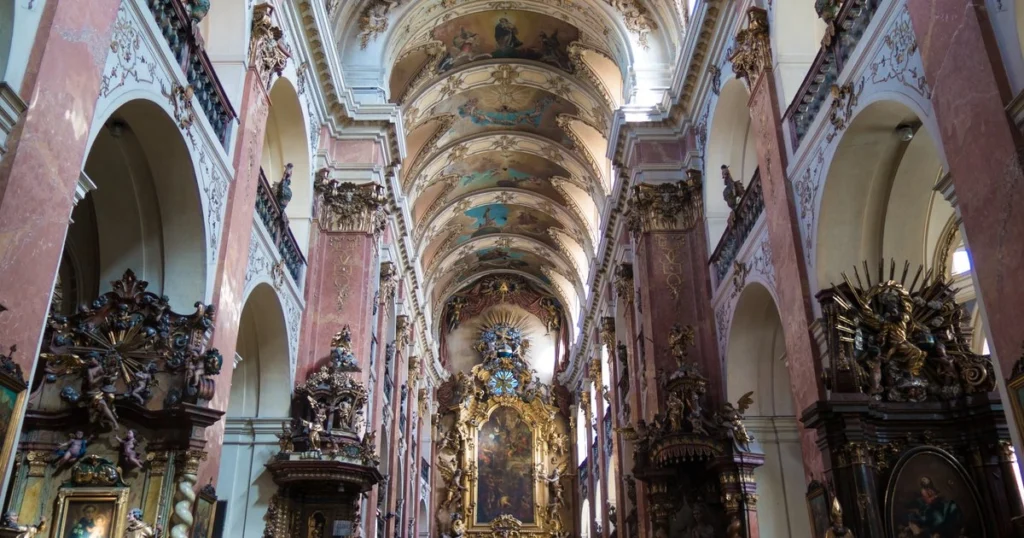
Inside the Church
The church space is shaped like a straightforward basilica with stands. The interior is literally overwhelmed with furniture, including 22 altars. The second largest collection of altarpieces by Petr Brandl is located here. Also interesting is the hanging pulpit, supported by the massive body of a lion. Among the interesting things is a plaque set into the wall in the northern side aisle above the entrance to the cloister, which dates from 1615 and bears a warning from butchers, according to which anyone who threatens the church will be cut into pieces. During the repairs carried out, small Gothic elements and parts of the masonry were revealed in some places of the three-nave.
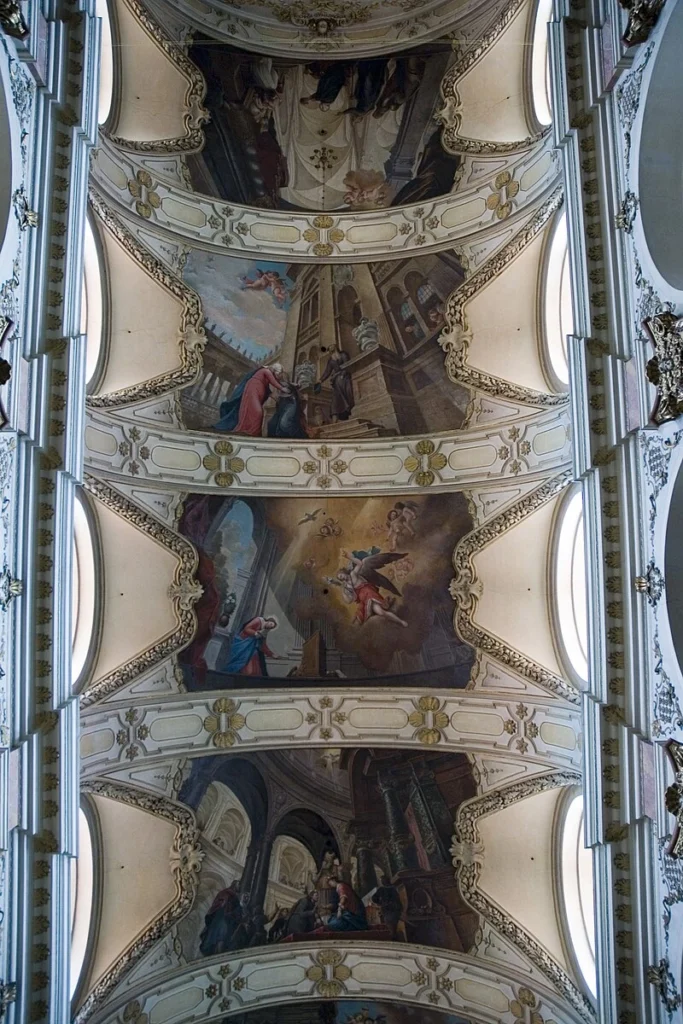
The Vault and Frescoes
The ceiling is done in classic Baroque style a barrel vault with curved lunettes on the sides. Each section of the ceiling has a painted scene. These were done in 1736 by a guy named František Voget, and they mostly show moments from the life of the Virgin Mary. Up in the choir, there’s a fresco celebrating the Holy Trinity. Originally, the Gothic vaulting was about five meters higher, but when they rebuilt, they lowered it to fit the Baroque style. A big triumphal arch separates the choir from the main space. It’s got stucco details and the Minorite symbol a pair of bleeding hands, one of Christ and one of St. Francis, crossing over each other.
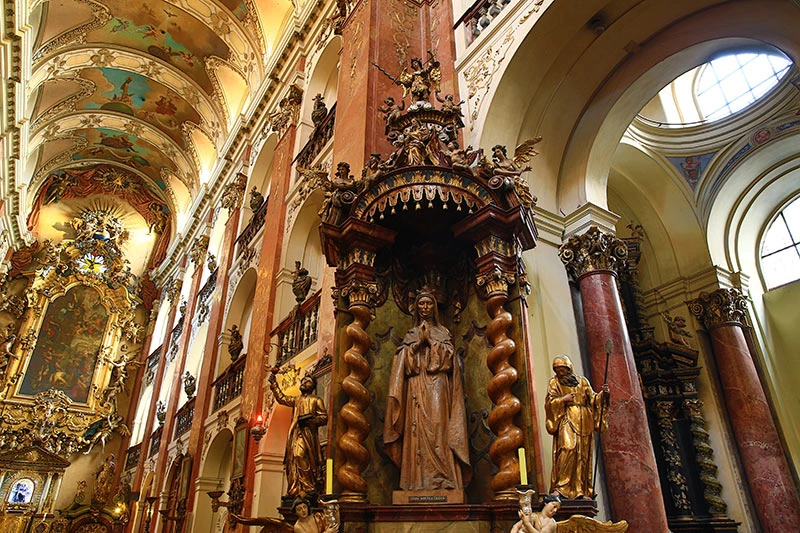
The Choir and Main Altar
The choir is really something. At the back is a massive frame held up by angels carved by Matthias Schönherr in the late 1730s. In the center is a powerful painting by Vaclav Vavrinec Reiner showing the beheading and glorification of St. James. Above it all, there’s a cross and the imperial crown, and below is a classic-style retable made by Ignác Michael Platzer in 1806. Right in the middle of that is a very rare wooden statue of the Pietà, dating all the way back to the late 1400s. It somehow survived the big fire in 1689 and used to be the focus of pilgrimages until Emperor Joseph shut that kind of thing down. Behind the current choir, there are still pieces of the old Gothic one with a little bit of the old vaulting from the Luxembourg era still visible.
Baroque Altars and Artworks
The church is full of beautiful Baroque altars and statues that really catch your eye. On the northern side of the choir, the Altar of the Holy Cross stands out with its Baroque crucifix from around 1730. Nearby, there’s a group showing the Mourning Virgin Mary with St. John, made in the middle of the 18th century. On either side of the choir, you’ll find two chapels: the Chapel of St. Francis Serafinus to the north, and the Chapel of St. Anne to the south. The St. Anne chapel is especially impressive because it has detailed Baroque woodcarvings from the workshop of František Antonín Weiss. There are many other altars around the church dedicated to different saints and themes like St. Agnes of Bohemia, St. Anthony of Padua, the Assumption of the Virgin Mary, and the Flight of the Holy Family into Egypt. The paintings on the altarpiece of the Visitation of the Virgin Mary, including the main Visitation scene and a large Baptism of the Lord, were done by Petr Keck, who died in 1730. Another famous artist, Petr Brandl, painted the altar showing St. Joseph with baby Jesus, the dramatic scene of the Murder of St. Wenceslas, and the Altar of All Saints. Nearby, you can see sculptures of St. Vitus and St. Ludmila, carved by Matěj Václav Jäckel. There are also works by other artists like Jan Kryštof Liška, who painted St. Teresa of Avila on the Altar of St. Walburga, and Hans von Aachen, whose painting decorates the Altar of Our Lady of Joy. Among the many other altars, you’ll find ones dedicated to St. Dismas, St. John of Nepomuk, the Holy Family, St. Florian, St. Jude Thaddeus, St. Thecla, Ecce Homo, and the Holy Trinity. The Holy Trinity altar has a beautiful carved portal made around 1710 by Marek Nonnenmacher. Inside it’s got a painting by Josef Mathauser from 1890, and there’s also a Baroque statue of Our Lady of Sorrows that was added later by František Geiger.
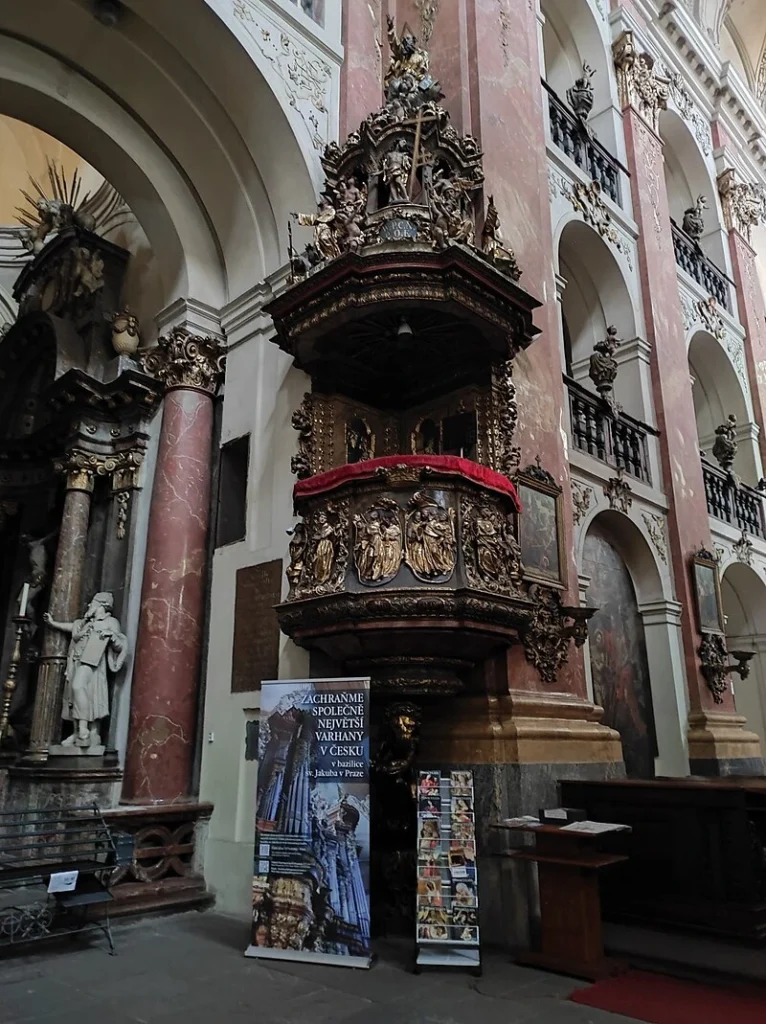
The Pulpit
The pulpit is a real showpiece. It’s all carved wood that looks like marble, built in 1714. A big lion holds it up, and on top, there’s a dramatic statue of God the Father and Jesus with angels. Around it are statues of St. Louis of Toulouse, St. Francis, St. Bonaventure, and St. Anthony of Padua. It’s basically a sermon in sculpture form.a
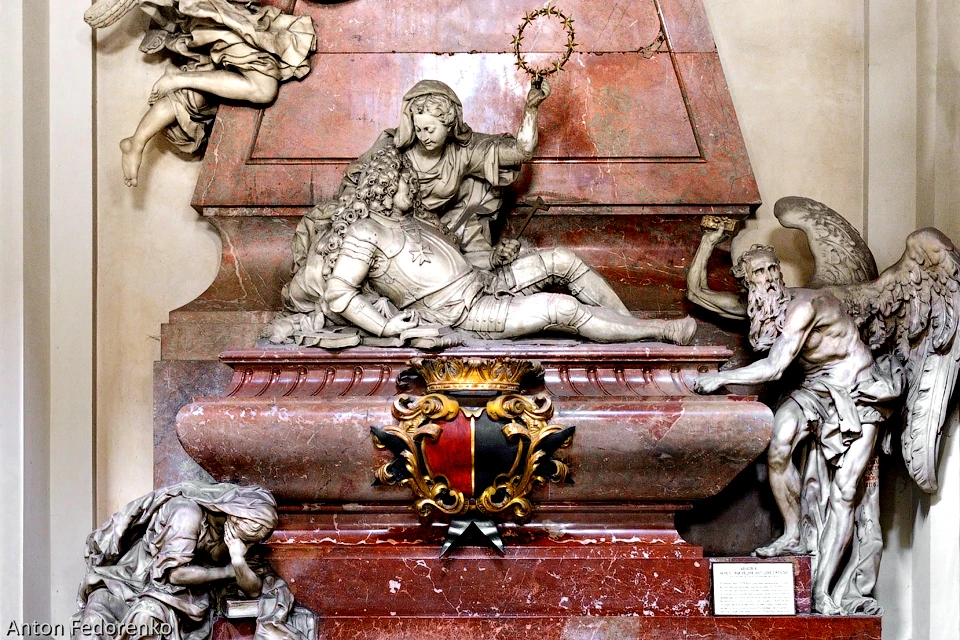
Tombstone of Wenceslas Vratislav of Mitrovic
At the end of the northern side aisle stands the tombstone of Jan Václav Vratislav of Mitrovic, Supreme Chancellor of the Kingdom of Bohemia, an excellent work by Ferdinand Brokoff according to the ideological concept of G. Heraeus and the architectural design of JB Fischer of Erlach, a work of European importance from the years 1714–1716. The statues are carved from sandstone and decorated with brown-white marble paint, the architecture is made of brown Sliven marble. On the tombstone rests a statue of the deceased in armor with a Maltese cross on a cyrus, supported by a woman, an allegory of Fame with a wreath of Immortality in her hand. Fame, a trumpet-wielding angel, flies above them and writes the glorious deeds of the deceased on the obelisk slab. On the left corner of the sarcophagus sits a grieving woman, an allegory of Grief (or Contemplation) with an open book of life at her feet (sometimes also referred to as Science) and on the right side is a standing winged old man straddling him: the god Chronos with an hourglass, he is missing his scythe (documented in an old sketch) and a dedicatory inscription from 1715.
The Benches
Even the pews in this church are impressive. The six-seater benches are from the early 1700s, done in a rich Baroque style. There’s also a special bench under the porch with fancy carvings and two family coats of arms Vaclav Josef Lazansky of Buková and his wife Maria Gabriela Cernínova of Chudenice. It’s amazing how even the seating tells a story.
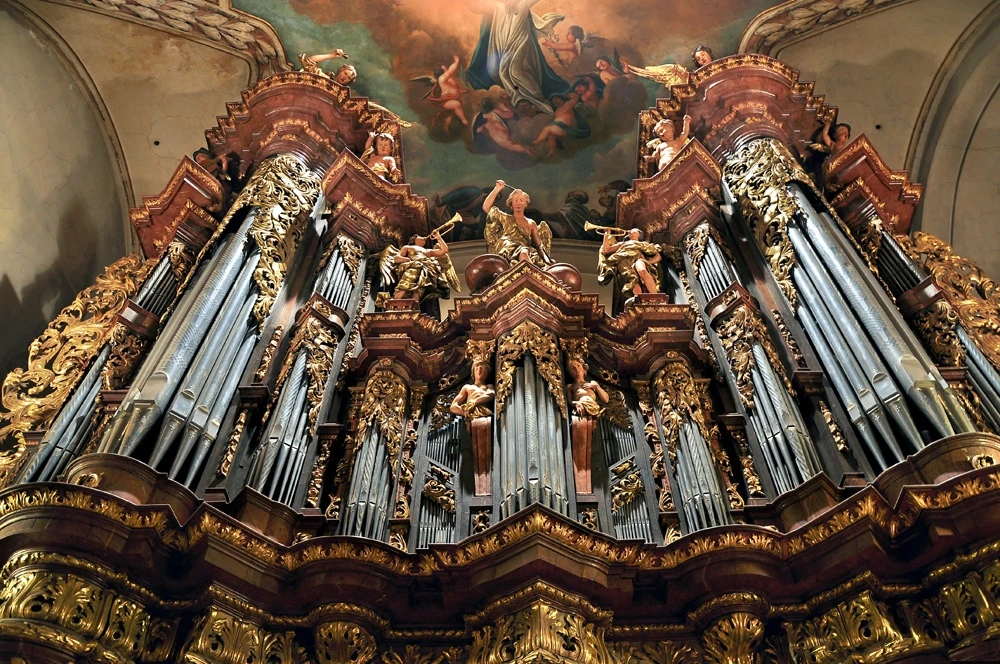
Organ
The original organ case from 1705 is the work of the famous Czech organ builder Abraham Stark of Lokte, with sculptures from the workshop of Matěj Václav Jäckel. Over the centuries, the organ has undergone many changes. In 1754, the first reconstruction took place, carried out by the Kralice organ builder František Katzer. In 1906, the organ was modified by the Prague organ building firm Josef Černý and Josef Rejna. Another intervention took place in 1941. According to the design of Bedřich Antonín Wiedermann, the organ was adapted for modern compositions. The last extensive reconstruction was carried out in 1981–82 by the Krnov Organ Works. In the new register layout, all of Stark’s original voices were restored, for the most part with the original pipes, and numerous interesting romantic colors were also retained. There are 8,277 pipes, 91 sounding registers, and four manuals on the current instrument. The last repair of the organ was completed in the summer of 2011. This is the organ with the largest number of pipes in the Czech Republic.
Interesting Fact
The 30th chapel on the Holy Way from Prague to Stará Boleslav, built between 1674 and 1690, is dedicated to the Pieta of St. James. It was donated by František Oldřich Kinský, the president of appeals.
Feast Day
Feast Day : 25 July
The feast of St. James the Greater, patron of the Basilica of St. James the Greater in Prague, is celebrated each year on July 25. It’s a traditional Christian observance, especially important in churches dedicated to him.
Church Mass Timing
Monday to Thursday : 6:45 AM
Friday : 6:45 AM, 5:00 PM
Saturday : 8:00 AM
Sunday : 8.30 AM, 10.30 AM
Church Opening Time:
Monday : Closed
Tuesday to Sunday : 9:30 am – 12:00 pm., 2:00 pm – 4:00 pm
Contact Info
Address :Basilica of St. James the Greater (Old Town)
Malá Štupartská 635, 110 00 Staré Město, Czechia.
Phone : +420 224 828 814
Accommodations
Connectivities
Airway
Basilica of St. James the Greater, Prague, Czechia, to Václav Havel Airport Prague (PRG), distance 30 min (15.1 km) via Evropská.
Railway
Basilica of St. James the Greater, Prague, Czechia, to Praha hlavní nádraží (Prague Main Railway Station), distance between 9 min (2.8 km) via Wilsonova.

